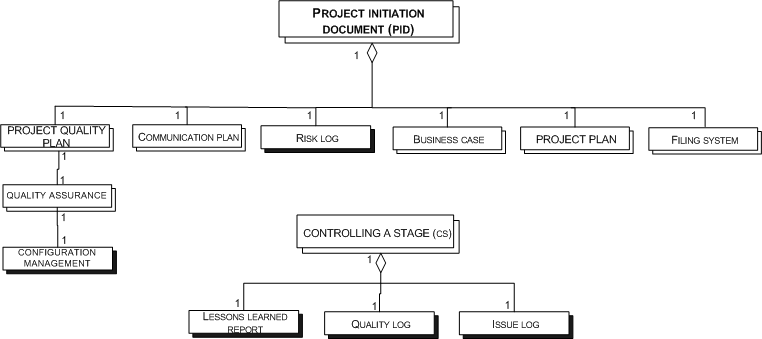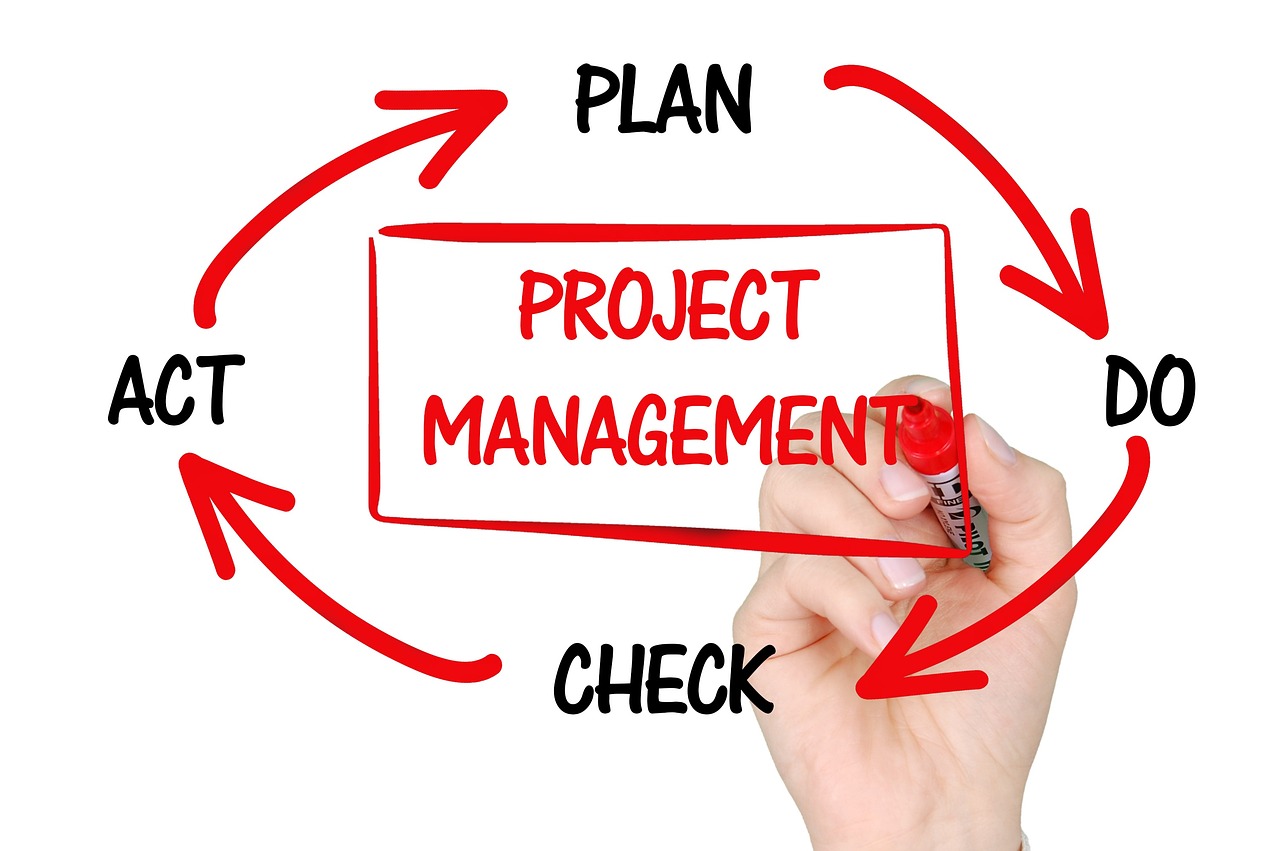The first step of any project is project initiation. Without a proper initiation, your project might not be successful. There are several steps during this project stage that you must follow. Luckily, I’ve detailed each of them below. But there are risks and challenges, all explained and elaborated on in the following sections.
Bottom Line Up Front
- There are ten steps of project initiation, from establishing its purpose to finishing touches and revisions;
- Any project initiation comes with its fair share of challenges. I’ve learned that from what experience has shown me. Among those challenges, there are delays, the lack of clear guidelines, and others;
- For a project to be successful, things like communication, collaboration, and clarity are essential. And it all starts with the project initiation stage.
Before we get into the nitty-gritty of starting a project, let’s define exactly what a project is and what a project isn’t.
What Is a Project?
Simply put, a project is something that is a temporary endeavor to create a unique product, service, or result. It needs to have a clearly defined start and end point, with clear objections and goals set within certain constraints such as time, budget, and resources. It is not routine operations – a project always has a clear starting point and end.
Through my experience as a digital project manager, I’ve come to understand that projects are, in essence, problem-solving processes. They are initiated to address a specific problem or opportunity and they involve a level of uncertainty and risk.
This is why many of us are drawn to starting projects – the fun is in the complexity and challenges ahead of us.
What Isn’t a Project?
On the flip side, not every task or set of activities is a project. Anything that is routine, ongoing operations is not a project. Think of these activities as the repetitive, continuous tasks that get done, without a defined beginning and end.
Day-to-day operations of a business keep the business going, and are important, but are not trying to create something new.
Something to keep in mind as well here is just because a task is big, doesn’t mean it’s a project. A task only becomes a project when it is complex enough to require planning, and resource management, and has a specific goal or end in sight. If we don’t have a timeline, we don’t have a project!
It’s so vital as project managers that we know exactly what a project is, and what a project isn’t.
Here’s a chart to break it down a bit more:
| Project (Designing a Website) | Non-Project (Ongoing Operations: Content Production & Tech Improvements) | |
| Definition | Ongoing, without a defined endpoint. | Repetitive and continuous activities, aimed at maintaining current business operations. |
| Duration | Defined start and endpoint. | Gathering requirements, designing a website layout, coding, testing, launching the website. |
| Outcome | Delivers a unique product (newly designed website). | Maintains or improves existing products (existing website). |
| Examples of Tasks | Regularly updating content, monitoring website performance, and troubleshooting issues. | Gathering requirements, designing a website layout, coding, testing, and launching the website. |
| Management | Requires project management skills, including planning, coordinating resources, risk management, and stakeholder communication. | Requires operational management skills, including routine task coordination, problem-solving, and day-to-day communication. |
| Risk & Uncertainty | Higher, due to the unique nature of the project and the constraints of time, budget, and resources. | Lower, as tasks are repetitive and predictable. |
Project Initiation: How to Start a Project – Main Steps & Things to Consider
Let’s detail each of the project initiation phases. But first, I want to tell you what project initiation is about.
What Is Project Initiation?
Project initiation is the first stage of any project life cycle. That’s regardless of your chosen PM framework. As I said in my previous articles, all projects have the following phases besides initiation, which is how it all starts: planning, execution, monitoring progress, controlling the outcome, and closing the project.
From my experience, everyone is involved in the initiation stage, from team members to stakeholders and clients. Then, it’s when we define the project’s scope and its goals. I also used to describe other elements such as budgets, costs, schedules, deadlines, and timeframes.
There are two documents you’ll need to draft during this project phase:
- Statement of work – the agreement between us, the project management team or company, and our client;
- Project initiation document – tells the scope of the project and the criteria that must be followed to achieve a successful outcome.
Initiation is a great place to start outlining your future tasks and actions. The two documents listed above are crucial, and they refer to the project’s main features: processes, people, and products.
PID defines parameters, offers the project context, and identifies risks. SoW describes all the aspects of the project while helping teams mitigate scope creep and other threats. SoW includes the project’s objectives, governance, due dates, deliverables, work requirements, and estimates.

Project Initiation vs Planning: What Sets Them Apart?
Project initiation defines a brief charter with a minimalistic description of the most important elements of the process. From my professional experience, those would be the company’s needs, the client’s expectations, desired deliverables, and a form of official approval.
The second stage, planning, involves more complex actions. My team used to create a comprehensive plan which outlined detailed aspects of the project. In terms of steps, here’s how these two stages differ from one another:
- Initiation – setting smart and measurable goals; creating schedules; identifying deliverables; planning tasks; defining roles; assessing risks;
- Planning – establishing why you agreed to do this project; determining the value the outcome will provide to your client; securing stakeholders’ buy-in.
Project Initiation – Main Steps
Here are the ten steps of project initiation.
Project Purpose
Why do you need to start this project? What drives you and your team? Is it worth it? Are there any serious risks? What kind of problem or need does the project solve? I ask myself all these questions every time I’m about to start a new project. It’s essential to know the opportunities a new process will create.
Hence, there must be a business case in which you should include goals, deliverables, and purposes. In addition, this document must show that the future project is aligned with your company’s approach and strategy.
Defining Project Goals
In any project, the goals must be SMART. I’ve learned that during my university years. Smart goals were among the first things my professors taught us, the students. In translation, the objectives should be specific, measurable, attainable, realistic, and time-framed.
Through the project’s goals, you can estimate the outcome’s value and the deliverables that clients expect.
Business Case
As I mentioned above, the business case is essential for project initiation. It details how a project and its objectives align with your business’s long-term strategy and plans. It explains why your company is willing to cover the costs of creating new products through its resources. By resources, I mean financial, workforce, and technical ones.
However, you shouldn’t go into much detail regarding technical aspects. Instead, business cases should focus more on convincing the management and stakeholders to approve the project. The document should also answer their concerns regarding business or financial risks.

Feasibility Study
Once the project gets approved, you should determine whether or not it will be a success. That is quickly done through feasibility studies. This step will let you know if the project is worth your effort. Moreover, it reveals any potential constraints. For me, a project’s feasibility study shows if my initial assumptions are correct.
Project Charter
This is the most complex and comprehensive element of the project initiation phase. It shows three important aspects: goals, team members, and the project’s estimated timeframe. Charters are the first project documents that help you identify essential details such as the process’s objectives, project scope, constraints, and required resources.
Team and Stakeholders
I love to assemble the team and create my project’s office. It’s one of my favorite parts of project management. Assigning team members their roles is also something I enjoy doing. I suggest you do that early on since it boosts the team’s accountability.
Now, let’s talk a bit about stakeholders. First, you’ll need a stakeholder register. This type of business relationship involves a lot of negotiation and communication. The second requirement is one of my strongest personal skills. Project managers spend plenty of time talking to stakeholders. There are two types of project stakeholders: internal and external.
Internal stakeholders are the company’s directors, employees, and managers. External stakeholders aren’t employed by the company. Instead, they’re shareholders, creditors, business angels, investors, suppliers, etc.
One thing I make sure of every time I start a new project is the focus I put on my team. My subordinates must all be accountable, proactive, well-informed, and responsible. You should make sure your teams are the same, too.
Analyzing Resources
You need to have the necessary resources to ensure your project is feasible. What resources do you currently have? Are they enough for your desired project? Can you get additional resources? If not, then you should readjust your project scope and expectations. Resource planning is also important, but it usually comes later, not in the project initiation stage.
Getting Approval
To ensure I get approval from all stakeholders, I develop a killer project pitch. It would help if you did that, too. Often, the one that must approve a project is the sponsor. However, you can ask your other stakeholders for their input and feedback to increase your approval perspectives.
Once the project gets approved, you can start planning and implementing it.
Project Office
For your business endeavors to be successful, you’ll need an experienced project team that constitutes the project office. You should therefore assign roles and responsibilities from the very first phase, the project initiation. This helps both managers and their staff throughout every project stage.
Review and Finishing Touches
Once the project is done and you’ve gone through all its stages, you’ll need to have a meeting to discuss any finishing touches. Also, reviews and feedback are in order. After delivering the final outcome to your client, you will still have to monitor the product or service. Maintenance work might also be needed.

Project Initiation: Other Things to Consider
Besides these steps I’ve detailed above, here are some other aspects for you to consider.
Methodology
What methodology would be the best for you to use? Many teams rely on hybrid or mixed frameworks. But before choosing one, you should establish the project’s size and complexity, the size and expertise of your team, and other elements. Among those other aspects are schedules, budgets, goals, clients, and their needs.
Tools
As a project management specialist, I’ve always wondered what the best and most effective tools are. That’s because new project management tools appear frequently. Hence, it isn’t easy to keep up, although necessary. I can’t say which tool you should choose. The only thing I could mention is for you to write down the following aspects:
- Your team, its members, their expertise, and the team’s structure;
- The project type and complexity;
- Your clients and their needs;
- The budget of the project.
You only need a few tools. Try to find a great one that’s versatile and has the most important functionalities. I’ve learned that the hard way. Integration is key! So, choose those tools that allow resource planning, collaboration, project management, task planning, and communication.
Risks
There’s nothing in this world that comes without risk. But some things are worth the risks. Thinking ahead is one thing you should do in the project initiation phase. This could lower potential risks. In addition, it would help if you determined those challenges that could harm your project’s outcome upfront.
I usually meet up with the entire team to establish all the RAIDs. From risks and assumptions to issues and dependencies, they’re all essential and should be included in the project’s log.
Deliverables
You can also determine deliverables in the first stage of your project. Discuss it with all stakeholders instead of just deciding on your own. It’s better to ask rather than assume. Keep these things in mind when creating deliverables:
- What they are;
- Their formats;
- Any necessary rounds of amends;
- Those involved in creating and delivering them;
- Deadlines and timeframes;
- Any potential deliverable dependencies.
Budget and Schedules
Once you have the project scope and the list of deliverables, you need to assign these roles and timings. Then, shape your team and tasks according to those timeframes. For example, some opt for short sprints, while others work in longer-lasting phases. You should also determine the proper parameters for your project with the team.
Instead of forcing processes that don’t fit, you should align them with your project scope. Once the team is in shape and ready to start working, estimate the costs. To come up with accurate expenses, you should have detailed and time-framed project phases.
Measuring Success
How can you know if your project was successful or not? First, you must define what success means for you and your team. Each project needs to be measured and reviewed. It’s the only way to understand where you did right and where things didn’t go as planned. Here are the measurement areas I have used over the years:
- Different KPIs, such as the number of those who subscribed to an online course;
- My clients’ satisfaction and feedback;
- My team members’ motivation and happiness;
- Timing and budget variance.
Project Initiation – Potential Challenges
Any project comes with a set of challenges. Luckily, with the right mindset and resources, you can overcome all or most of them. Here are the most common issues I’ve experienced as a project management expert:
Slow Project Initiation
At first, many teams are relaxed and take things slowly. But the last thing you want is a start that drags out for a long time. I’ve experienced this countless times, and every time, it affected the entire project. Here’s what I learned from my experience on how to keep things on the right track and move at an appropriate pace to meet deadlines:
- Instead of writing dozens of emails per day, you should give your clients a quick call or talk during short standup meetings;
- Provide feedback so that your employees know if their actions might delay the project and its deliverables;
- Establish clear goals and make sure everyone understands and pursues them;
- Focus on keeping the project momentum. This can be done as long as your team remains motivated and engaged.
Embarking on a New Project After It Already Started
Ideally, all those involved in a project are present and engaged from the beginning till the end. That’s not always the case. I was recruited halfway through a project a couple of times. I found those situations challenging since I needed more insights provided during the initiation phase. Here’s what you can do:
- Inform yourself by reading documents and asking the team about their progress, goals, and processes. Keep going until you get everything figured out. The team should be open to offering you any useful links to documents, project statuses, deliverables, and other elements;
- Organize kick-off meetings with both stakeholders and team members. These will keep you up to date. It’s highly beneficial to include reviews during these meetings.
One Single Project Initiation for a Complex Project with Numerous Phases
Complex and long-lasting projects need several resets. Simply put, you might have to repeat the project initiation phase more than once. Here’s my advice regarding this matter:
- Handle each project phase as an individual mini-project. This way, you’ll have to establish key points that suit each step. It will take a lot out of the guesswork, and you will be free of assumptions;
- Each stage would benefit from mini kick-offs. Moreover, make sure you check all the boxes featured on the project initiation checklist.
Lack of Clarity
I had seen many situations when the start of a project was pretty ambiguous. Things and roles were vague, and everyone needed clarification. To solve those issues and align your subordinates, ask your client for a list of requirements. The list should contain both business and technical demands. Engage all your employees right from the beginning. Involve your team in making decisions to keep up project momentum.
Delaying to Get the Project Started
You might lose momentum if something unexpected occurs and there’s a delay. Hence, the entire project might be compromised. To avoid this, you should have many budget-related talks and involve clients in the decision-making.
If your client can’t afford to cover your proposed budget, you may want to readjust the project scope. Solve any internal issues that might happen regarding your team.
Practical Tips for Project Initiation
- Start by setting the project’s tone;
- Get your employees involved early on;
- Stay in touch with your clients – make them feel a valuable part of the project;
- Communicate clearly with stakeholders, managers, team members, and clients;
- Agree on a process and make sure everyone is on board;
- Adjust the process to fit your project;
- Have at least one in-person meeting with your clients before implementing the project;
- Involve all people in creating an agenda for your kick-off meeting;
- Discuss both dependencies and risks with your team members to future-proof your project;
- Think ahead through every project phase, not just in the beginning.
Project Initiation FAQs
Answer: Project initiation is essential since it sets the tone for all the other phases of the project. Before planning and implementing anything, you must ensure your endeavors are viable. The outcome should bring value and meet the client’s needs. This first stage provides structure and offers a feasible approach to your stakeholders. Moreover, it helps you gain visibility, secure resources, and foresee potential roadblocks.
Answer: The initiation stage is followed by project planning. Once the foundation has been created, it’s time to plan your project. Detailed plans, deliverables, roadmaps, and goals are established during the second project stage. Planning allows you to clarify team roles, determine success metrics, outline your timeline, and share the communication plan with all those involved.
Answer: Besides initiation and planning, projects also have other phases, such as strategy development, design, execution, testing, product launching, maintenance, support, and project closing.
Bottom Line
The project initiation stage is perhaps the most important phase. This is when you establish clear goals, map the road to successful outcomes, and ensure everyone is aligned with the project goals.
Without these elements, deliverables might become compromised, and your clients could be unhappy with the results they’re getting.
Related read
- How to Document Version Control
- Types of Artifacts in Project Management
- Project Management Glossary of Terms: A Comprehensive List of PM Concepts
Sources:
- https://monday.com/blog/project-management/ready-set-go-project-initiation-the-first-phase-of-project-management/
- https://zapier.com/blog/project-initiation/
- https://www.projectpractical.com/project-initiation-process-6-key-activities/
- https://business.adobe.com/blog/basics/initiation
- https://ligsuniversity.com/blog/initiating-project-right-way
- https://www.coursera.org/articles/project-management-lifecycle
- https://www.theknowledgeacademy.com/blog/project-initiation-phase-importance-and-roles-involved/
- https://www.pmi.org/learning/library/first-step-important-initiating-project-3597

Alexandra is a passionate digital strategist who loves project management tools and principles. As a content writer, Alexandra has created many in-depth guides on e-commerce, digital marketing, and project management tools and is here to help the Projects Pivot readers learn more about managing projects and the digital tools that we use!

